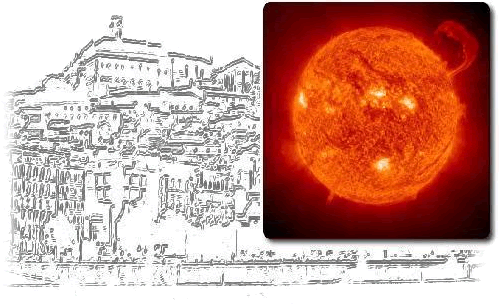|
|
|
|
|
|
|
|
|
|
|
|
|
Janardhan Padmanabhan, Mr. - PhD |
|
Physical Research Laboratory, Ahmedabad - 380009, India |
|
http://www.prl.res.in/~jerry/ |
|
|
|
|
|
Session 4 - Speaker |
|
Are we on the verge of a Maunder-like Grand Solar Minimum? |
|
J. Padmanabhan, Physical Research Laboratory, Ahmedabad - 380009, India; S. K. Bisoi, Physical Research Laboratory; Ahmedabad - 380009, India, S. Ananthakrishnan, Department of Electronic Science, University of Pune, Pune - 411 007, India. |
|
|
|
Several studies in recent times have reported that solar high latitude
fields have been steadily declining since around 1995. The previous solar cycle 23
has also been unusual in that, it experienced one of the deepest solar minima in the
past 100 years with over 70% of the days in 2007 and 2008 being entirely spotless.
We have made a detailed study of the effect of such a steady and prolonged decline
in solar photospheric magnetic fields on the solar wind using interplanetary
scintillation (IPS) observations of solar wind micro-turbulence levels. Our study,
of solar photospheric magnetic fields covering solar cycles 21, 22 and 23, has shown
a steady decline in magnetic fields at latitudes above 45 degrees in both solar
hemispheres and has also shown a steady decline in solar wind micro-turbulence
levels, in the distance range 0.2 to 0.8 AU, in sync with the declining solar
photospheric fields. These results beg the question as to whether we are headed
towards a long period of little or no sunspot activity, in a manner similar to the period
between 1645 and 1715 known as the Maunder minimum, when the sun was completely
devoid of sunspots. We have estimated the expected sunspot number around the
maximum of solar cycle 25 and find that cycle 25 will be much weaker than the
current cycle 24 which had a peak sunspot number in November 2013 of around 75 in
November 2013. We have also looked for signatures of the declining solar wind
micro-turbulence levels in the Earth's ionosphere and our study indicates that the
night time ionospheric cut-off could reduce to well below 5 MHz if the decline in
the solar magnetic fields continues beyond 2020. |
|
|
|
|
|
|
|




 









 |



